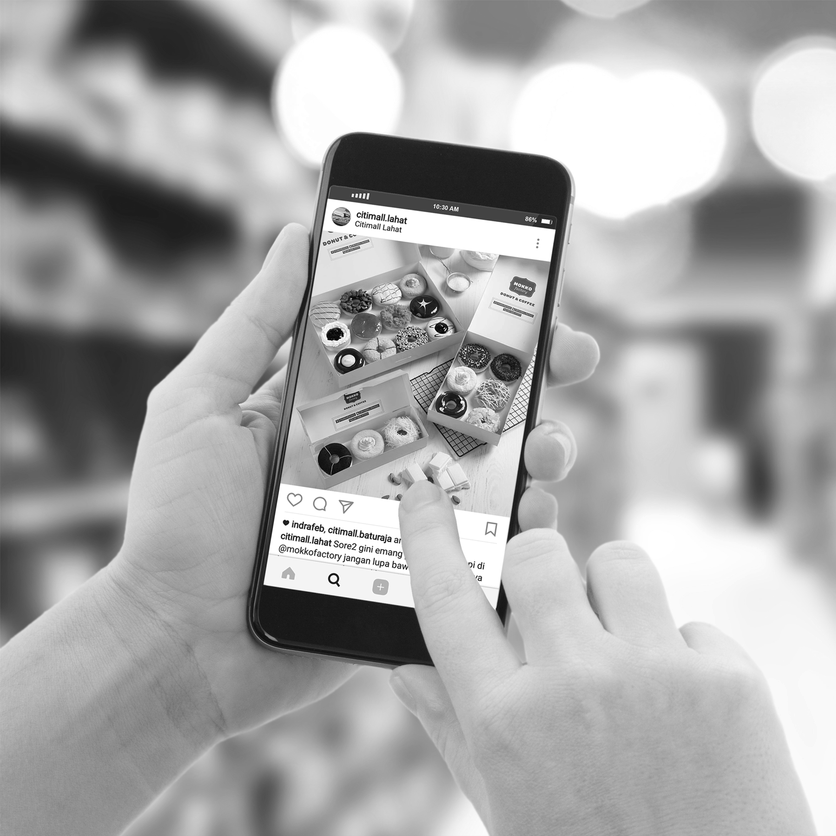360 DEGREE

-
PESTEL ANALYSIS
A PESTEL analysis or PESTLE analysis (formerly known as PEST analysis) is a framework or tool used to analyse and monitor the macro-environmental factors that may have a profound impact on an organisation’s performance. This tool is especially useful when starting a new business or entering a foreign market. It is often used in collaboration with other analytical business tools such as the SWOT analysis and Porter’s Five Forces to give a clear understanding of a situation and related internal and external factors.
PESTEL is an acronym that stand for Political, Economic, Social, Technological, Environmental and Legal factors. However, throughout the years the framework has been expanded with factors such as Demographics, Intercultural, Ethical and Ecological resulting in variants such as STEEPLED, DESTEP and SLEPIT. -
INDUSTRY ANALYSIS
Examine the past trends in an industry, the current demand and supply mechanics, and the future outlook of the industry. Evaluate the viability of investing in a company.
To come up with a good strategy to deal with the competition in the industry, you must first understand the industry itself. After this, you can make informed choices on the best competitive strategy to use. By the time you develop a competitor analysis, you should be able to:- Know your position in the industry
- Identify opportunities and threats within the industry
- Highlight the strengths and weaknesses of your organization
- Pinpoint the areas where strategic changes will lead to high returns
The information that you receive from the analysis shapes your marketing plan. It will help you identify what makes your services or products unique and what aspects of your products needs to be upgraded to make them more competitive. -
COMPETITIVE LANDSCAPE
Identify direct or indirect competitors and, at the same time, comprehend their mission, vision, core values, niche market, strengths and weaknesses.
In the volatile nature of the business world, where companies represent a competition to others, this analysis will help you to establish a new mind-set which facilitates the creation of strategic competitiveness. -
PORTER’S FIVE FORCES
Porter’s Five Forces analysis is a framework that helps analyzing the level of competition within a certain industry. It is especially useful when starting a new business or when entering a new industry sector. According to this framework, competitiveness does not only come from competitors. Rather, the state of competition in an industry depends on five basic forces:
Threat of new entrants
- Economies of scale
- Product differentiation
- Brand identity/loyalty
- Access to distribution channels
- Capital requirements
- Access to latest technology
- Access to necessary inputs
- Absolute cost advantages
- Experience and learning effects
- Government policies
- Switching costs
- Expected retaliation from existing players
Bargaining power of suppliers
- Number of suppliers
- Size of suppliers
- Supplier concentration
- Availability of substitutes for the supplier’s products
- Uniqueness of supplier’s products or services (differentiation)
- Switching cost for supplier’s products
- Supplier’s threat of forward integration
- Industry threat of backward integration
- Supplier’s contribution to quality or service of the industry products
- Importance of volume to supplier
- Total industry cost contributed by suppliers
- Importance of the industry to supplier’s profit
Bargaining power of buyers
- Buyer volume (number of customers)
- Size of each buyer’s order
- Buyer concentration
- Buyer’s ability to substitute
- Buyer’s switching costs
- Buyer’s information availability
- Buyer’s threat of backward integration
- Industry threat of forward integration
- Price sensitivity
Threat of substitute products or services
- Number of substitute products available
- Buyer’s propensity to substitute
- Relative price performance of substitutes
- Perceived level of product differentiation
- Switching costs
- Substitute producer’s profitability & aggressiveness
Rivalry among existing competitors
- Number of competitors
- Diversity of competitors
- Industry concentration and balance
- Industry growth
- Industry life cycle
- Quality differences
- Product differentiation
- Brand identity/loyalty
- Switching costs
- Intermittent overcapacity
- Informational complexity
- Barriers to exit
-
MARKET SIZING
Estimate the potential of a market. It is particularly important for companies looking to launch a new product or service. We define for you:
- The total size (or potential size) of a market
- The major competitors in a market by category
- The composition and profile of a target customer
- The products/services available in the market
- The most significant trends in the market

-
CUSTOMER EXPERIENCE
Companies that create exceptional customer experiences (CX) can set themselves apart from their competitors.
The whole idea around CX is to maintain an ongoing deliberate effort to keeping customers pleased with the service they have received so that continuous improvement is something that exists as a real process.
Armed with advanced analytics, CX leaders gain rapid insights to build customer loyalty, make employees happier, achieve revenue gains of 5 to 10 percent, and reduce costs by 15 to 25 percent within two or three years. But it takes patience and guts to train an organization to see the world through the customer’s eyes and to redesign functions to create value in a customer-centric way. The management task begins with considering the customer, not the organization, at the center of the exercise.
How does recent customer experience rate as opposed to overall customer satisfaction? One answer to this question is to recognize that CS is captured as a point in time measure that relates to a range of time over which a product or service was procured, while customer experience is a real time measure relating to the most recent touch point of a customer with company’s product or service. While CS is important for capturing the high-level view of “how we are doing”, CX provides us with an opportunity to improve in a rapid fashion.
The product development lifecycle (PDLC) takes many steps into consideration from the beginning of an idea through its production into a working product or service. The CX component needs to be at the heart of the PDLC of any product or service. This goes beyond just including various customer audiences to be part of the review process, it also needs to encompass a mechanism for how customers who use the product/service will interact with the company to resolve matters, improve service and build a better experience as close to real time as possible.
An emphasis on CX can bring a level of transparency and accountability that forces a decision, embeds a sense of urgency and causes companies to respond and resolve matters instead of burying the bad ones under the rug or letting them get lost in the survey frenzy of traditional CS models. -
CUSTOMER SATISFACTION
We measure satisfaction across key moments of the customer journey, evaluating performance against expectations and competition. Our models link satisfaction to loyalty and business outcomes, enabling precise actions to boost retention and satisfaction.
-
SEGMENTATION
We go beyond demographics by identifying actionable customer segments based on behaviors, needs, and attitudes. This approach allows your brand to customize offerings, optimize targeting, and unlock deeper engagement.
-
USAGE & ATTITUDE
We uncover how people discover, use, and perceive your product or service. Our U&A studies reveal the drivers of usage, loyalty, and switching behavior, delivering insights to shape your marketing and innovation strategy.
-
NEED-GAP ANALYSIS
Need-gap analysis helps identify unmet consumer needs in your category. We evaluate satisfaction with existing offerings and map those against importance, revealing whitespace opportunities for product development and positioning.

-
PATH TO PURCHASE
Understand the shopper’s journey from trigger to purchase. We analyze touchpoints, decision influencers, and friction areas to optimize messaging, media, and shelf strategy.
-
EYE TRACKING
Using eye-tracking technology, we capture how shoppers visually process products and shelves. This helps optimize packaging, point-of-sale materials, and in-store placement to drive conversion.
-
CONSUMER IMMERSIONS
Through ethnographic techniques and in-context observations, we explore deep-rooted habits, motivations, and pain points to bring consumer behavior to life and inspire brand innovation.
-
POSM TESTING
We evaluate the effectiveness of Point-of-Sale Materials (POSM) across dimensions such as visibility, clarity, and purchase impact. This ensures your in-store assets drive attention and action.

-
CONCEPT TEST
We test product ideas with your target audience to measure appeal, relevance, differentiation, and purchase intent. We also identify improvement areas before launch.
-
PRODUCT TEST
Our testing evaluates performance of products in realistic usage situations, helping you understand strengths, weaknesses, and how your offer compares to competitors.
-
USABILITY TESTING
Ensure your product, app, or website delivers an intuitive and satisfying experience. We detect friction points and guide improvements through user-centered feedback.
-
PACKAGE TESTING
We assess design impact, clarity of messaging, differentiation, and purchase intent for packaging concepts — ensuring your product stands out on the shelf.
-
PRICING RESEARCH
Using techniques such as Gabor-Granger and Van Westendorp, we identify the optimal price range for your offering, balancing consumer willingness to pay with perceived value.
-
NAME & LOGO TESTING
We evaluate name and logo options on parameters such as recall, fit, emotional appeal, and distinctiveness — ensuring your brand identity resonates with your audience.
-
SENSORY ANALYSIS
For FMCG and food products, we conduct sensory evaluations (taste, smell, texture, etc.) to align product attributes with consumer preferences and expectations.
-
TURF ANALYSIS
TURF (Total Unduplicated Reach and Frequency) analysis helps you identify the optimal combination of product variants, flavors, or SKUs to maximize reach within your target audience. This ensures your portfolio covers the widest number of unique users while avoiding redundancy and cannibalization.

-
PRE-TESTING
We evaluate campaign concepts or creatives before launch across KPIs such as recall, message clarity, emotional impact, and call-to-action effectiveness.
-
POST-TESTING
Measure the actual impact of your campaign on awareness, perception, and behavior. We identify what worked, what didn’t, and how to improve future executions.
-
ROI
We combine survey and behavioral data to estimate Return on Investment for marketing activities. This includes media mix modeling, attribution analysis, and campaign optimization.
-
TURF ANALYSIS
TURF (Total Unduplicated Reach and Frequency) analysis in advertising identifies the most effective combination of messages, formats, or media channels to maximize unique reach. It helps marketers prioritize campaign elements that work best together, ensuring optimal impact with minimal redundancy.

-
BRAND HEALTH TRACKING
We monitor brand awareness, consideration, and loyalty over time to assess equity strength and shifts in perception. Our trackers benchmark against competitors and reveal how marketing activities influence key brand KPIs. -
BRAND POSITIONING
We identify the optimal territory your brand can own in the consumer’s mind — credible, distinctive, and emotionally resonant. This guides consistent messaging, creative development, and strategic decision-making. -
BRAND ACTIVATION
We support execution of your positioning strategy through on-ground activations, influencer campaigns, digital content, and partnership programs — ensuring your brand connects meaningfully with target audiences.
